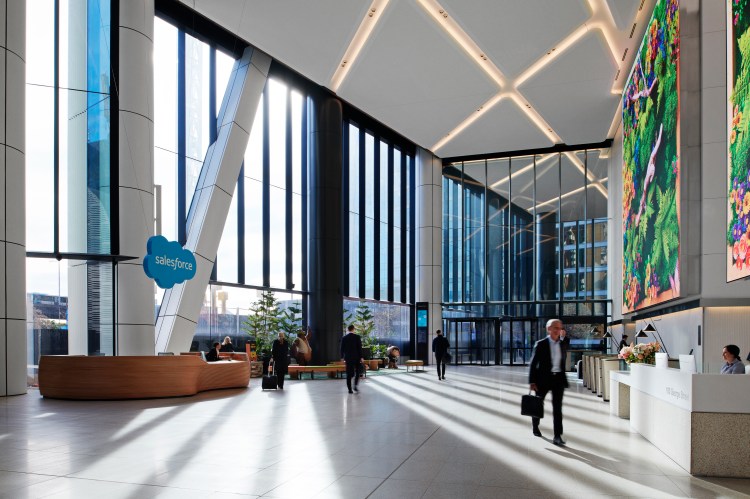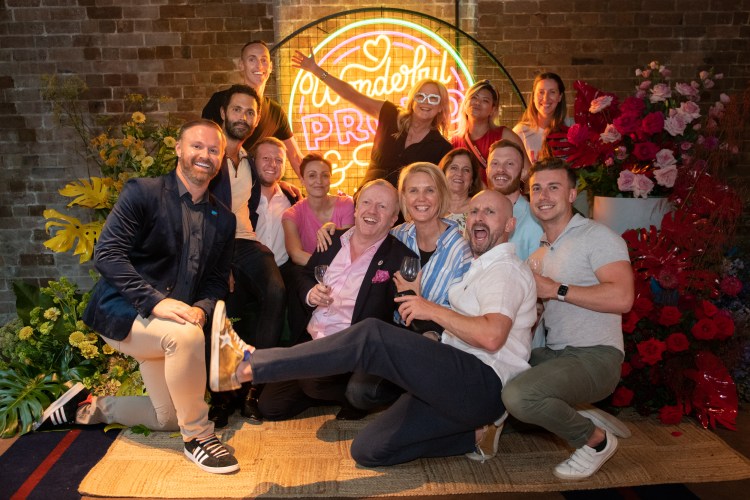Why a Virtual Training Program Was the ‘Perfect Fit’ for 300 Business Students


Do you want to start a philanthropic service for your business, or find more ways to give back to your community? You might want to consider virtual training programs. Here’s how to start one, and why initiatives like these are crucial to building consumer trust.
Davinder Mann
It’s hard to work at Salesforce and miss the culture of philanthropy that thrives here. Almost every business update includes some type of action to ‘give back’ — like a note from the CEO Pip Marlow on our RAP pledge, or partnering with customers on supporting local shelters for at-risk women.
When the culture is already there, new philanthropic initiatives are not hard to start. That’s why we weren’t worried about finding 60 employee volunteers to become guides for our new Business Services Student Placement Program.
Salesforce has partnered with two government programs that help to connect industry with school communities: NSW Regional Industry Education Partnerships (RIEP) and NSW Workplace Learning Network.
By completing the program, each student has earned 35 hours of mandatory placement time to go towards their studies. It’s a tangible benefit that each student walks away with, alongside professional experience with a multinational company, new contacts and hopefully a few new friends.
The idea of a virtual placement program is the first of its kind for the NSW business services curriculum and a new venture for our education partners. But, at Salesforce, we know digital upskilling programs work — and work well — because they’ve been critical to us in adapting to hybrid work. Like most businesses over the past two years, we’ve seen the power of digital collaboration to keep us connected and pushing forward.
Typically, these students will find valuable work placement from a business within their area. All work experience is valuable exposure for students to begin choosing a career path. All we want to do is provide another path. For any company that uses digital platforms to connect, offering upskilling programs like these are no longer a far reach. Here is our approach to help other business leaders set up virtual training projects.
Our approach: designing a virtual training program
The best relationships work when all parties recognise the value in each other. That has been our experience with NSW Regional Industry Education Partnerships (RIEP) and NSW Workplace Learning Network in bringing the program to life.
We wanted students to walk away from the program with real skills to prepare them for a career in our technology industry — especially showing them they don’t need a tech-heavy background to thrive! Bringing together elements of design thinking, project management and presentation skills, students needed to select a UN Sustainable Development Goal (SDG) and design a project plan aimed at building community support for the goal.
We’ve partnered with the NSW Department of Education and other education bodies to build similar programs in the past. What was different this time is the recognition of student placement hours towards their grades — tangible benefits and a powerful step towards defining their career path.
We wanted students to become a part of our extended culture. That’s why our guide volunteers lead only small groups of five students. We wanted them to feel seen, heard and acknowledged during their time with us, even through a virtual program.
Our panel guides were chosen specifically for having backgrounds similar to the students so they could see this career path was in reach. Alongside the professional skills, it’s this type of soft exposure that students gain from the placement program that can have remarkable and long-lasting impacts, even through a virtual delivery.
Why it works: benefits for teachers and students
Just as we adapted to pandemic restrictions through hybrid and virtual work, virtual upskilling programs have the power to give students unprecedented access to developmental information, anytime and anywhere. Partnering with public sector services in this way is an incredible opportunity and we’re already seeing the benefits to both students and teachers.
Shane Davies, a Business Services teacher from Ulladulla High School, says there were very limited choices for work placement in the region. She recognises that, now, students need to be able to navigate all types of technology and that a virtual placement program gives them access to new skills.
Shane acknowledges that it’s hard to develop learning outcomes to meet all students’ needs and that’s where virtual learning can thrive. Cody is a year 11 business student who uses a wheelchair and is part of the virtual placement program.
Shane says equitable access to opportunities and resources is the true value of virtual upskilling programs — a powerful tool in preparing students with critical skills for the future of work.
Want to be a platform for change? It starts with culture
Initiatives like our Business Services Student Placement Program have never been easier to provide, meaning there’s even more opportunity to affect change in our communities.
Why are these programs worth the effort for other businesses? Because it’s a great way to build trust with communities and consumers, and that’s never been more important.
The latest State of the Connected Customer shows 68% of consumers expect businesses to act with society’s best interest in mind.
It’s also good for your employees. Increasingly, employees want to give back, and initiatives like this give them an opportunity to express this drive practically. But they don’t want it to impact their roles and this is where business leaders can step in to support, allowing them the time and resources to be involved.
Responsible leaders may recognise the community need and want to give back, but struggle to see how it could work within their business. But delivering programs becomes much easier when you already have a culture of giving. This sort of culture starts at the top and permeates through all areas of business communication.
The next stage is dedicating business resources for giving back. Here at Salesforce, our Volunteer Time Off (VTO) program is part of our 1-1-1 model. Each Salesforce employee is afforded seven paid VTO days per year, where they can put our shared values into action. These and other impact drivers fall under our concept of ‘citizen philanthropy’.
Find out what this looks like for your business so your giving approach is both impactful and sustainable.
Read more:


















